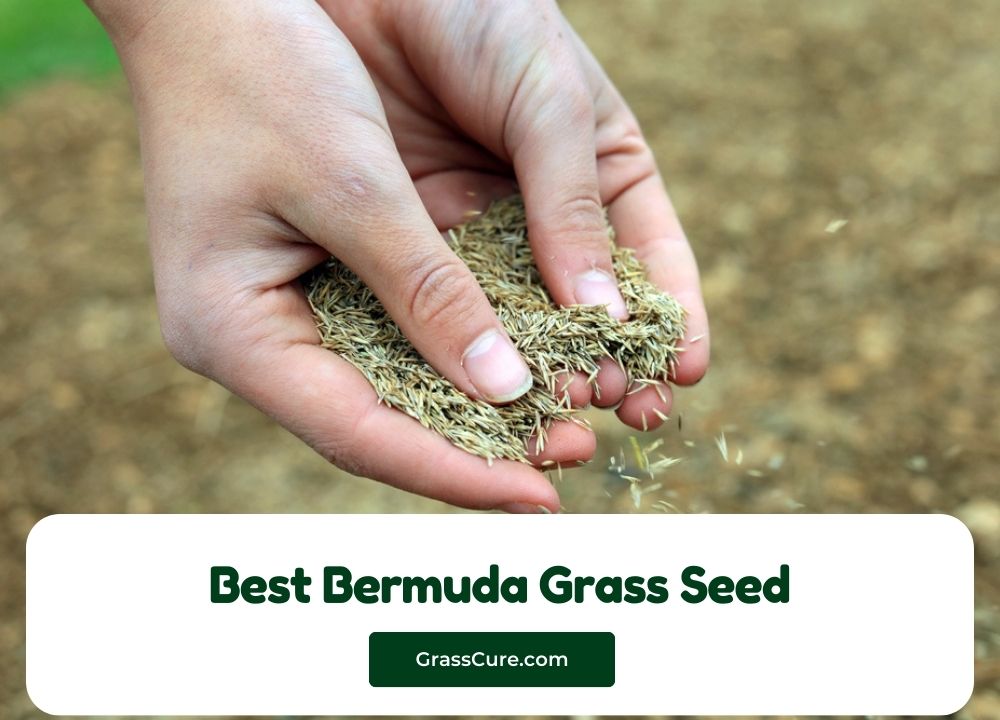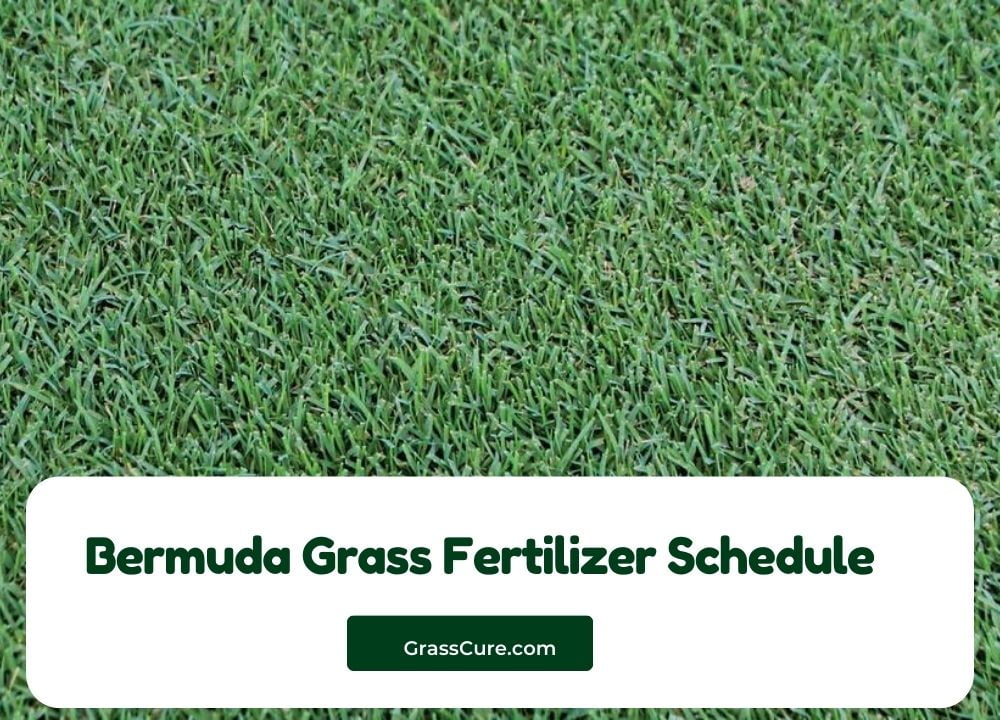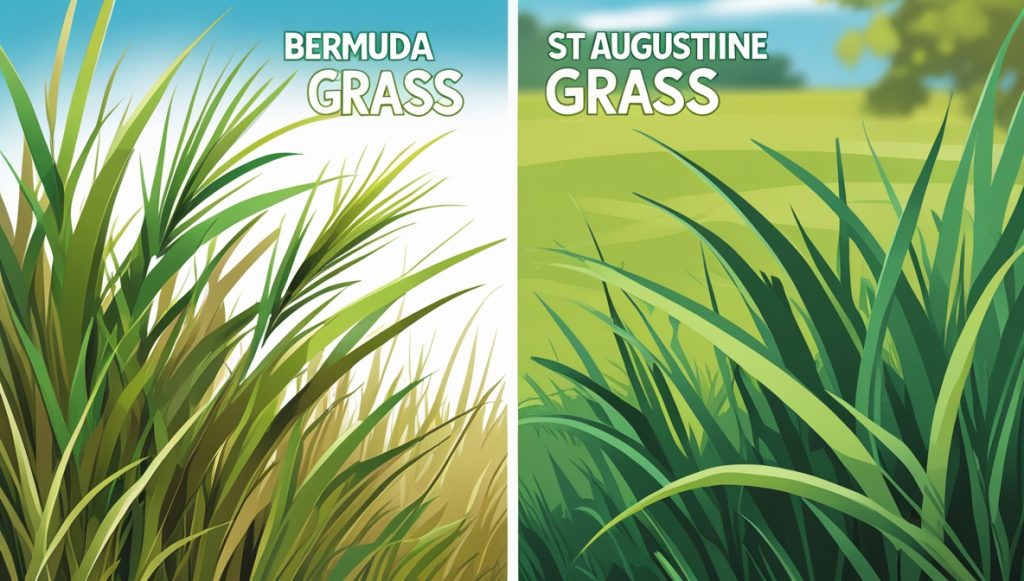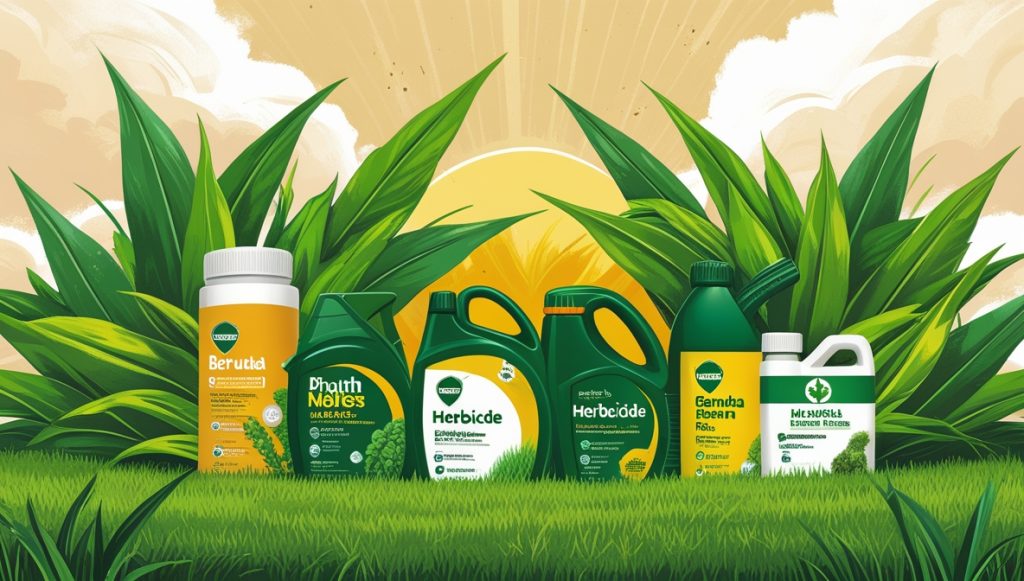Bermuda grass is a popular choice for homeowners and landscapers alike, prized for its vibrant green color and ability to withstand heavy foot traffic. Its dense growth not only enhances the aesthetic appeal of lawns but also promotes a healthier turf that resists pests and diseases. However, achieving that lush, thick carpet of grass can sometimes be a challenge. In this blog post, we’ll explore effective strategies and best practices to help you cultivate a thicker Bermuda grass lawn, ensuring it remains the envy of your neighborhood. Whether you’re starting from scratch or looking to improve an existing lawn, these tips will guide you toward achieving a lush and resilient turf.
How to Make Bermuda Grass Thicker Step By Step guide
Understanding Bermuda Grass
What is Bermuda Grass?
Bermuda grass (Cynodon dactylon) is a warm-season grass that thrives in sunny climates, making it a popular choice for lawns, golf courses, and sports fields. Known for its fine texture and dense growth habit, it establishes quickly and recovers rapidly from wear and tear. Its ability to tolerate heat and drought makes it particularly suited for regions with high temperatures.
Growth Characteristics
Bermuda grass grows vigorously during the warm months, typically from late spring to early fall. It prefers full sun, requiring at least 6-8 hours of sunlight daily for optimal growth. The grass spreads through both seeds and underground rhizomes, allowing it to fill in bare spots and recover quickly from damage. Under ideal conditions, it can form a thick and lush turf.
Common Challenges
Despite its many benefits, Bermuda grass can face several challenges that can lead to a thin or patchy lawn. Compacted soil can restrict root growth, while pests like grubs and chinch bugs can damage the grass. Diseases such as dollar spot and brown patch can also affect its health. Understanding these challenges is crucial for implementing effective strategies to maintain a thick and healthy Bermuda grass lawn.
Best Practices for Thicker Bermuda Grass
Soil Preparation
A healthy lawn starts with quality soil. Conduct a soil test to determine pH and nutrient levels. Bermuda grass thrives in well-drained, sandy loam with a pH between 6.0 and 7.0. If necessary, amend the soil by adding organic matter like compost and using fertilizers rich in nitrogen to provide essential nutrients. Proper soil preparation sets the foundation for robust grass growth.
Proper Mowing Techniques
Mowing plays a crucial role in the thickness of Bermuda grass. Set your mower blade to a height of about 1 to 2 inches, as mowing too low can scalp the grass and weaken it. Mow regularly, removing no more than one-third of the grass height at a time to encourage dense growth. Keeping the mower blades sharp ensures clean cuts, promoting healthier grass.
Fertilization
Fertilizing Bermuda grass appropriately is essential for its thickness and color. Use a balanced fertilizer high in nitrogen, as it promotes lush, green growth. Fertilize in early spring as the grass begins to grow and again in late summer to sustain growth through the growing season. A general rule is to apply 1 to 1.5 pounds of nitrogen per 1,000 square feet annually. Always follow the manufacturer’s recommendations for specific products.
Watering Techniques
Proper watering is vital for maintaining thick Bermuda grass. Water deeply and infrequently, aiming for about 1 to 1.5 inches per week, depending on weather conditions. Early morning is the best time to water, as it reduces evaporation and allows grass blades to dry before evening. Avoid overwatering, which can lead to shallow root systems and increased vulnerability to diseases.
Fertilization
Types of Fertilizers
When it comes to fertilizing Bermuda grass, choosing the right type of fertilizer is essential. There are two main categories:
- Slow-Release Fertilizers: These fertilizers release nutrients gradually over time, providing a consistent supply of nitrogen and other essential nutrients. They are ideal for maintaining steady growth and reducing the risk of nutrient leaching.
- Quick-Release Fertilizers: These fertilizers deliver nutrients rapidly, making them suitable for quick green-up after dormancy or during periods of heavy growth. However, they require more frequent applications and can increase the risk of burning the grass if not applied correctly.
Fertilization Schedule
To achieve the best results with Bermuda grass, follow a strategic fertilization schedule:
- Early Spring: Apply a slow-release fertilizer as soon as the grass begins to grow, typically when soil temperatures reach around 65°F (18°C). This encourages lush growth and recovery from winter dormancy.
- Late Spring to Early Summer: A second application of fertilizer can be made about 6 to 8 weeks after the initial feeding. This helps sustain growth during the peak growing season.
- Late Summer: Apply another round of fertilizer in mid to late summer to support continued growth and prepare the grass for the upcoming fall.
- Fall: In regions with mild winters, a light application of slow-release fertilizer can help Bermuda grass store nutrients for the dormant season. However, avoid fertilizing late in the fall, as this can encourage growth just before the grass goes dormant.
Nutrients Needed
Bermuda grass thrives on specific nutrients, with nitrogen being the most critical for lush, green growth. Here’s a breakdown of essential nutrients:
- Nitrogen (N): Vital for leaf growth and overall green color. Aim for a fertilizer with a higher nitrogen content (e.g., 16-4-8 or 24-5-11).
- Phosphorus (P): Important for root development, phosphorus is especially crucial when establishing new grass. A balanced fertilizer with adequate phosphorus levels is beneficial during the initial growth phases.
- Potassium (K): Enhances drought resistance and overall health. Potassium helps Bermuda grass withstand stress and recover from damage.
Watering Techniques
Importance of Proper Watering
Watering is a critical factor in maintaining a thick and healthy Bermuda grass lawn. Proper hydration supports root development, encourages lush growth, and helps the grass resist pests and diseases. However, overwatering or underwatering can lead to a host of problems, including shallow roots, disease susceptibility, and nutrient leaching.
Ideal Watering Schedule
To promote deep root growth and overall grass health, adhere to the following watering schedule:
- Frequency: Aim to water deeply and infrequently, about once or twice a week. Adjust this based on weather conditions—hot, dry spells may require more frequent watering, while cooler, rainy periods may necessitate less.
- Amount: Provide about 1 to 1.5 inches of water per week. This amount can be delivered all at once or spread over two watering sessions. Deep watering encourages the grass to develop a robust root system, allowing it to access moisture from deeper soil layers.
- Timing: Early morning is the best time to water, ideally between 6 AM and 10 AM. This allows the grass blades to dry off during the day, reducing the risk of fungal diseases and maximizing water absorption.
Methods of Watering
Choosing the right watering method can significantly impact the effectiveness of your irrigation efforts. Here are a few options:
- Sprinklers: Automatic or manual sprinklers are popular for lawns. Ensure that the entire area receives even coverage, adjusting the sprinkler heads and distances as needed. Rotating or oscillating sprinklers can cover larger areas effectively.
- Soaker Hoses: These hoses allow water to seep slowly into the soil, providing consistent moisture without over-saturating the surface. They are particularly useful for gardens and flower beds alongside Bermuda grass.
- Drip Irrigation: This method delivers water directly to the root zone, minimizing evaporation and runoff. Drip systems are efficient but may require more setup initially.
Additional Tips
- Monitor Soil Moisture: Use a soil moisture meter or perform a simple test by sticking your finger into the soil about an inch deep. If it feels dry, it’s time to water.
- Adjust for Rainfall: Keep an eye on the weather forecast and adjust your watering schedule accordingly. In rainy periods, you can skip or reduce your watering to prevent waterlogging.
- Avoid Evening Watering: Watering in the evening can leave grass damp overnight, increasing the risk of fungal diseases. Aim for morning watering instead.
Aeration and Dethatching
Aeration Techniques
Aeration is a crucial practice for promoting healthy root growth and improving the overall health of Bermuda grass. By creating small holes in the soil, aeration allows air, water, and nutrients to penetrate deeper into the root zone. Here are effective aeration techniques:
- Core Aeration: This method involves using a machine or tool to remove small plugs of soil from the lawn. These plugs should be left on the surface to decompose, adding organic matter back to the soil. Aim to aerate your lawn once or twice a year, preferably in the spring or early fall when Bermuda grass is actively growing.
- Spike Aeration: Spike aeration uses solid tines to create holes in the soil without removing any material. While it can be helpful, it is generally less effective than core aeration, as it can compact the soil further around the holes.
- When to Aerate: The best time to aerate Bermuda grass is during its active growth period, typically in the spring or early summer. Avoid aerating during drought conditions, as stressed grass may not recover well.
Dethatching
Dethatching is the process of removing excessive thatch buildup from the lawn. Thatch is a layer of dead grass, roots, and organic material that can accumulate on the soil surface. While a small amount of thatch (up to ½ inch) can be beneficial for moisture retention, too much can hinder water and nutrient absorption. Here’s how to effectively dethatch your Bermuda grass:
- Identifying Thatch Buildup: Check for thatch by pulling back a section of grass and examining the layer between the soil and grass. If it feels thick or spongy and exceeds ½ inch, it’s time to dethatch.
- Dethatching Methods:
- Mechanical Dethatcher: Renting or purchasing a power dethatcher can make the process more efficient. These machines use vertical blades to cut through the thatch layer and pull it to the surface.
- Manual Dethatching Rake: For smaller areas, a dethatching rake can be used to comb through the grass and remove thatch. This method is more labor-intensive but effective for spot treatments.
- When to Dethatch: The best time to dethatch Bermuda grass is during the growing season, ideally in late spring or early summer. Dethatching during this period allows the grass to recover quickly and fill in any bare spots.
Pest and Disease Control
Identifying Common Pests
Bermuda grass can be susceptible to various pests that can hinder its growth and overall health. Some of the most common pests include:
- Chinch Bugs: These small insects suck the sap from grass blades, leading to yellowing and eventually death of the grass. Look for patches of dead or dying grass, especially in sunny areas.
- Grubs: The larvae of beetles, grubs feed on the roots of Bermuda grass, causing it to wilt and die. Signs include spongy areas in the lawn that can be pulled back easily.
- Armyworms: These caterpillars can quickly strip leaves from Bermuda grass, causing severe damage. Look for missing grass blades and frass (insect droppings) in the affected areas.
- Aphids: These tiny, green or black insects feed on plant sap and can weaken the grass. They often produce a sticky substance called honeydew, which attracts ants and can lead to the growth of sooty mold.
Preventive Measures
Preventing pest infestations is key to maintaining a healthy Bermuda grass lawn. Here are some effective preventive measures:
- Maintain Healthy Soil: Healthy grass is less susceptible to pests. Ensure proper aeration, watering, and fertilization to strengthen your lawn.
- Mow Regularly: Keeping your grass at the recommended height prevents pests from establishing themselves. Taller grass can also shade the soil and reduce pest activity.
- Inspect Regularly: Conduct regular inspections of your lawn for signs of pest activity. Early detection can help mitigate damage and reduce the need for treatment.
- Encourage Beneficial Insects: Predatory insects like ladybugs and lacewings can help control pest populations naturally. Planting a diverse range of flowers and plants can attract these beneficial insects.
Treatment Options
If pests become a problem, various treatment options can help control their populations:
- Cultural Control: Modify lawn care practices to reduce pest problems. For instance, adjust watering and mowing schedules to promote healthier grass that can resist pests.
- Biological Control: Introduce natural predators or beneficial nematodes to the lawn. These organisms can help keep pest populations in check without the use of chemicals.
- Chemical Control: If infestations are severe, consider using insecticides. Choose products specifically labeled for use on Bermuda grass, and follow all application instructions carefully. Opt for targeted treatments that minimize harm to beneficial insects and the environment.
- Fungicides: For diseases affecting Bermuda grass, fungicides may be necessary. Identify the specific disease (e.g., dollar spot, brown patch) to select the appropriate fungicide and apply it as recommended.
Effective pest and disease control is essential for maintaining a thick and healthy Bermuda grass lawn. By understanding common pests, implementing preventive measures, and using appropriate treatment options, you can protect your lawn from damage and promote robust growth. Regular monitoring and timely interventions will ensure your Bermuda grass remains vibrant and resilient throughout the growing season.
Overseeding for Thicker Grass
When to Overseed
Overseeding is a beneficial practice for enhancing the density of your Bermuda grass lawn. The best times to overseed Bermuda grass are:
- Late Spring to Early Summer: This is the ideal window when temperatures are consistently warm (around 65°F or 18°C) and the grass is actively growing. This timing allows new seeds to germinate quickly and establish before the peak summer heat.
- Early Fall: In warmer regions, overseeding in early fall can also be effective. While Bermuda grass typically goes dormant in cooler temperatures, overseeding can help maintain density and prepare the lawn for recovery in spring.
Selecting the Right Seed
Choosing the right seed is critical for successful overseeding. Here are some tips:
- Choose High-Quality Seed: Look for certified Bermuda grass seed varieties that are disease-resistant and suitable for your climate. Hybrid varieties tend to be more robust and can establish quickly.
- Consider Your Lawn’s Conditions: Select a seed type that matches your lawn’s light, soil, and moisture conditions. Some Bermuda grass varieties are better suited for sunny areas, while others tolerate partial shade.
- Blend with Existing Grass: If you already have Bermuda grass, select a variety compatible with your existing lawn to ensure a seamless transition.
Overseeding Techniques
To effectively overseed your Bermuda grass lawn, follow these steps:
- Prepare the Lawn: Before overseeding, mow your lawn to a lower height (around 1 to 1.5 inches) to expose the soil and reduce competition for the new seeds. Raking the lawn lightly can also help loosen the soil surface.
- Aerate the Lawn: Performing core aeration before overseeding can significantly improve seed-to-soil contact, enhancing germination rates. Aerate in multiple directions for optimal coverage.
- Spread the Seed: Use a broadcast spreader to evenly distribute the Bermuda grass seed over the prepared area. Follow the recommended seeding rate on the seed package—typically around 1 to 2 pounds per 1,000 square feet.
- Watering After Overseeding: After overseeding, water lightly and frequently (about 2-3 times a week) to keep the soil consistently moist, aiding seed germination. Avoid overwatering, which can lead to seed rot.
- Fertilize: Applying a starter fertilizer after overseeding can provide the necessary nutrients for new grass seedlings. Choose a balanced fertilizer with higher phosphorus levels to promote root development.
Overseeding is an effective method to achieve a thicker Bermuda grass lawn, enhancing its resilience and aesthetic appeal. By timing your overseeding correctly, selecting the right seeds, and following proper techniques, you can significantly improve the density and health of your lawn. With proper care and attention, your overseeded Bermuda grass will thrive, providing a lush, green carpet for years to come.
Conclusion
Achieving a thick and vibrant Bermuda grass lawn requires a combination of knowledge, proper care, and consistent maintenance. By understanding the unique characteristics of Bermuda grass and implementing best practices such as effective soil preparation, proper mowing, fertilization, watering techniques, aeration, dethatching, and pest control, you can significantly enhance the health and density of your lawn.
Overseeding is an excellent strategy to further improve thickness, especially when done at the right time with high-quality seeds. By paying attention to the specific needs of your Bermuda grass and being proactive in your lawn care routine, you can cultivate a lush, resilient turf that not only enhances the beauty of your landscape but also provides a durable surface for recreational activities.
As you implement these strategies, remember that patience and consistency are key. With time, your efforts will result in a thick, healthy Bermuda grass lawn that will be the envy of your neighborhood. Embrace the process and enjoy the rewarding experience of nurturing your outdoor space to its fullest potential!
Additional Resources
For further information and support on caring for your Bermuda grass lawn, consider exploring the following resources:
- University Extension Services: Many state universities offer resources and guides on lawn care tailored to specific regions. Look for local extension services that provide research-based advice on Bermuda grass maintenance.
- Gardening and Lawn Care Books:
- The Lawn Care Manual by John D. McCulley
- The Organic Lawn Care Manual by Paul Tukey
- Online Gardening Communities: Websites like GardenWeb and Reddit’s r/lawncare provide forums where you can ask questions, share experiences, and receive tips from fellow gardeners and lawn care enthusiasts.
- Lawn Care Blogs and Websites:
- Lawn Care Academy – Offers comprehensive guides on various lawn care topics, including Bermuda grass.
- The Lawn Institute – Provides educational resources and research on turfgrass management.
- YouTube Channels:
- GCI Turf Academy – Focuses on lawn care techniques, including fertilization and pest management.
- Lawn Care Nut – Offers practical tips and tricks for maintaining healthy lawns, with a focus on Bermuda grass.
- Local Garden Centers and Nurseries: Visiting your local garden center can provide access to knowledgeable staff who can recommend products and practices suitable for your specific lawn conditions.
- Professional Lawn Care Services: If you’re looking for expert assistance, consider hiring a professional lawn care service that specializes in Bermuda grass. They can provide tailored advice and services to help you achieve your lawn goals.






